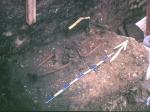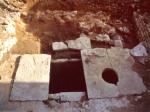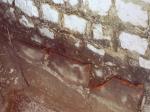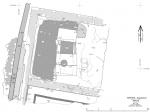Summary (English)
During the earthworks in the area of the settlement of Žuljana, two graves from the Roman period were discovered and archaeological work was carried out in December 2005. The site is located in the northeastern part of the Žuljana settlement, on the position of Brijezi owned by Nikola Hasan (Žuljana bb), located about 60 m from the sea. By the excavations conducted two Roman, skeletal burials were unearthed, one of which was buried in an amphora, and the other under tegulae and imbrices. Both graves were oriented east-west, buried at a distance of 5.5 m, and at a depth of approximately 130 cm beneath the present surface level. Unfortunately, no grave goods or other finds have been found in any of them, so according to the shape and the type of amphora, they are dated to the 4th century AD. This is the so-called small African amphora (Africana I, Keay III), originating from North Africa (Tunisia). Amphora burial is probably partial and secondary burial because only a part of the skull and an upper arm has been found inside the amphora. Tagulae covering the other grave were connected with imbrices in a form of a gable roof. The skeleton which has been found underneath was poorly preserved, probably due to the acidity of the soil.
Occupation of the area of Žuljana can be traced back to prehistory (Orlovica and Ulijenje hillforts), and then through antiquity to the present day. However, the advantages of the location of Žuljana in a deep and naturally sheltered bay, with an elongated field in the background, water springs and easy communication with the area of Ston became particularly evident in the Roman period. This is best evidenced by the Roman period shipwrecks near the island of Lirica, as well as individual finds in the wider area of Žuljana. Therefore, it can be presumed that the remains of a villa rustica could be found at the locations of Korta and Međine and the associated burial site at the Brijezi location, to which the aforementioned graves can also be attributed (I. Žile, D. Perkić 2006, Hrvatski arheološki godišnjak 2/2005, 435–437).
- Ivica Žile
- Domagoj Perkić
Director
- Domagoj Perkić
- Ivica Žile
Team
Research Body
- Konzervatorski odjel u Dubrovniku






![Download [PDF]](/excavation/skins/fasti/images/results/download_sml.png)


